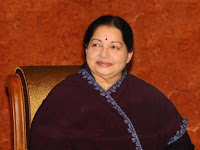Competitiveness of the country has improved in goods market efficiency, and innovation.
India has risen rapidly among all countries in the global competitive stakes by climbing 16 notches to the 39th position during the past year in the WEF’s Global Competitiveness Index.
According to the World Economic Forum’s (WEF) latest Global Competitiveness Report for 2016-17 this marks the biggest scale of improvement in competitiveness among all countries and is the second year in a row India has gone up 16 ranks in the WEF index.
It suggests that improvements in institutions and infrastructure have increased overall competitiveness along with recent reforms such as opening the economy to foreign investors and increasing transparency in the financial system.
Oil prices
India’s competitiveness has improved, particularly in goods market efficiency, business sophistication and innovation, while lower oil prices and improved monetary and fiscal policies have made the economy not only stable, but also the fastest growing among G20 countries, the report noted.
“Still, a lot needs to be done... huge challenges lie ahead on India’s path to prosperity,” the report added, stressing that despite significant improvements in infrastructure and social indicators such as health and education over the past decade, it lags other nations on such parameters.
According to executives polled for the report, India’s tax regulations, corruption, tax rates and poor public health are the most problematic factors for doing business.
Labour market
The report added that the labour market rigidities and the presence of large, public enterprises especially in the utilities and financial sector make the economy less efficient.
“The labour market is segmented between workers protected by rigid regulations and centralised wage determination, especially in the manufacturing sector, and millions of unprotected and informal workers. Lack of infrastructure and ICT use (where India is ranked 120th in the world) remain bottlenecks,” the report said, emphasising that progress in recent years has been slow and further investment is necessary to connect rural areas and ensure they equally benefit from and contribute to India’s development.
Digital India
While India is the only South Asian economy in the top half of the rankings, Sri Lanka surprisingly ranks ahead of it in ‘technological readiness’ — one of twelve pillars on which countries are rated.
“The country’s biggest relative weakness today is in technological readiness, where initiatives such as Digital India could lead to significant improvements,” the report said. The efficiency of the goods market in India has also deteriorated over the past decade, and the WEF reckons this would change once the GST regime is implemented.





































































No comments:
Post a Comment